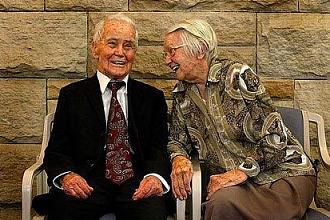Vacations! Vacations? Vacations. Different emotions and feelings come with the word “vacation.” For some individuals and families, it is the pinnacle of the year’s schedule, while for others it is the dreaded monster that has to be fought and dealt with each year.
The different types of holidays are as diverse as families and individuals. To some, it is the dream of going to some idyllic island, while to others it is relaxing at a beach or pool with a great book,; still to others it is cruising to distant countries or a bus tour through ancient landmarks and medieval cities. Other favorites include backpacking in a national forest, hiking mountain trails, pitching tents, rolling out sleeping bags by a clear running stream, and taking in the universe of stars at night. Interestingly, it was my parent’s motto that a vacation should be better than being at home, and so it was off to a beach resort at a five-star hotel with all the trimmings.
As a country, even though most individuals recognize the need for a time out, we have become a no-vacation nation. Compared to some European countries that guarantee a set number of vacation days per year -- such as Luxemburg (35 days), Norway (29 days), and Switzerland (28 days) -- not a single U.S. state has a paid-vacation law on its books. Additionally, while some employers allow employees to bank their time off or receive payments for unused vacation time, in 2013 a whopping 169 million vacation days were lost from “use it or lose it” policies, which calculates to essentially 52 billion dollars of free labor to companies.
Why Not Vacation?
The excuses are numerous for not taking time off for a well-deserved break. Forty percent of respondents in one study stated there was “just too much work to do.” Twenty percent of respondents in the same study indicated, “I just enjoy my job and didn’t need the days off.” Others were afraid that “their job would be eliminated while they’re away.” Interestingly, 17 percent of surveyed managers suggested that those employees who took vacation time were less dedicated and 13 percent considered them unworthy of promotion. To be fair to employees, some companies are making vacations part of the work program. Motley Fool, an investment services company with over 300 employees, randomly selects workers each month and offers them a two-week paid holiday with a $1,000 stipend. U.S. Travel offers an extra $500 if an employee takes his or her allotted vacation days. Skipping vacation has health consequences for both sexes.1 Women are 2 to 8 times more likely to suffer some form of depression, and for men the risk of heart attacks rises by a third.2 No wonder our Lord instructed His disciples both then and now to “come apart and rest awhile.”
Funding your Vacation
Too often in my seminars I hear individuals and families say their vacation is to get away from the daily tension and stress of life, yet their lifestyle shows a lack of good money-management coupled with financial over-commitment. For example, a husband with two jobs and his wife with a full-time career are both burnt out from striving to make ends meet. In order to take a well-deserved break, they would have to put their vacation on a credit card and then return to face the need to take on extra work or overtime to pay for it. The vacation would leave them even more stressed out than before they took the leisure time off. The best practice is to dedicate a certain amount of dollars in your monthly household budget for vacations. My wife and I have practiced this for over 40 years, and I can say that it is a great feeling when we step onto the bus for a country tour or walk or onto the gangway of a cruise ship, knowing it is already totally paid for.
Enjoy a Staycation
Cash shortage for a vacation does not mean you do not take a family holiday. You can have a great vacation experience without ever leaving town by doing a stay-at-home vacation or “staycation.” Here’s how it works: First, you set a period of time just as if you were going on a cruise. Second, you make a plan that includes all the activities and meals. Third, you establish guidelines to make it feel like a vacation such as no working from home, no cleaning or laundry, and definitely no extra cooking by mom. Just like a regular holiday, the more fun activities you plan, the more successful will be your staycation. In deciding on the daily activities, have a family meeting and discuss everybody’s ideas. Encourage creativity by putting creative ideas in a jar and then draw one each day for spontaneity. Think like a tourist, and you will be surprised at how many activities you’ll find, such as community events, museums, playgrounds, and parks you have never visited. Look for specials and coupons for restaurants and local happenings. The week before the staycation clean the house and complete all the laundry, prepare some easy, stress-less meals, and purchase disposable dishes and utensils.
During your staycation week, break some regular house rules: stay up late, sleep in late, discover hiking or biking trails, and play lots of games. If as a family you enjoy camping, haul out your basic camping gear and tent and sleep, eat, and cook in your backyard. Two final items: create a staycation budget for all the activities including dining out, and be sure to put aside money for a special splurge once a day. By all means, take lots of pictures so the kids can create a scrapbook of memories to treasure and share. You might just be surprised when it’s over that the family will call this the absolute greatest vacation.
References:
- Jack Dickey, “Vacation,” Time, June 1, 2015, pp. 46-49.
- The Week, July 2013 from Marketplace.org.
- Mary Hunt, “Take This Fabulous Family Vacation This Summer,” Debt-Proof Living, June 2015, pp. 5-6.


























